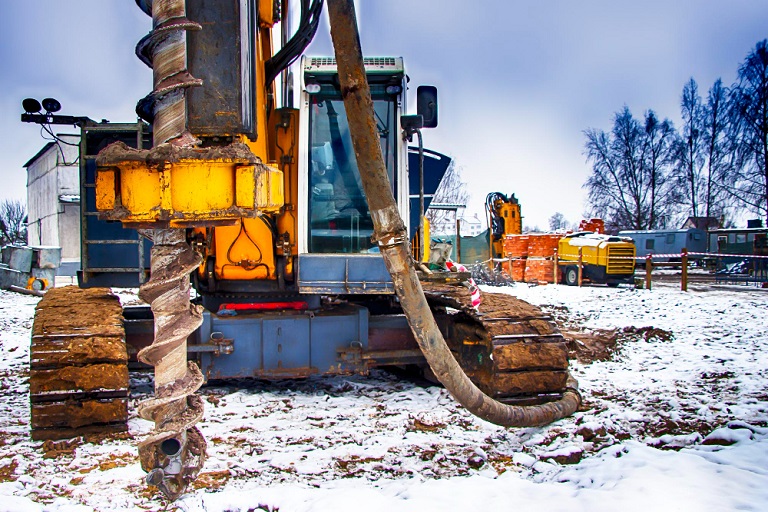How To Know Your Concrete Is Aged And Ready For Ice Melt

While not all finished concrete is built equal, its strength and durability depend on the factors like ingredient quality, ratios, mixing techniques, and curing conditions. Hence, we need to understand whether our concrete is ready for ice melt and how ice melt on concrete works.
New concrete needs up to 12 months to settle and hence is not advisable to use any ice melt on concrete. The state of new concrete is like a sponge that absorbs anything that comes in contact, including moisture and ice melt products. This new concrete cannot afford the effect of deicers.
When the ice melts on concrete and leaches out water brine, it seeps inside concrete pores and refreezes as the temperature drops. The constant process of the freeze/thaw cycle creates pressure inside, weakens the concrete layers, and results in cracks.
Besides, the impact of Salt and chloride-based ice melt causes popouts on the concrete surface. Hence, you should never apply ice melt on new concrete less than 12 months old. So, is there an ice melt safe for concrete? Of course, we, fortunately, have safe and natural ice melt that is entirely safe for concrete.
Is There An Ice Melt Safe For Concrete?
Concrete is porous and alkaline material with a pH value of 11. Any interaction with substances with a pH value below 07 can cause deterioration. Most ice melt products contain salts and chloride that are corrosive and harmful to the concrete once they enter the concrete capillaries and pour.
Steel reinforcements within the concrete are vulnerable to corrosion due to moisture and oxidation, which leads to rust, and rust occupies a greater volume than steel. This expansion creates tensile stresses in concrete pores that eventually cause cracks and spalling.
Due to its natural form, urea is the safest ice melt on concrete, eco-friendly, and safe for the environment. As a note, you must wait 12 months before introducing newly built concrete pours to ice melt products.
And even after 12 months, you should avoid Salt and chloride-based ice melts and use a natural urea-based product to mitigate the chances of corrosion and cracks on your concrete.
Safe Thaw- The Most Preferred Ice Melt On Concrete
Safe Thaw is a 100% natural, non-toxic, and biodegradable formula that is safe for your concrete and steel reinforcement because it protects water brine from the reformation of ice during the freezing and thawing process and keeps your concrete safe from cracks and corrosion.
Its concentrated formula provides long-term, maximum effectiveness with long shelf life. It is safe for concrete, machinery, vehicles, and vegetation. It is non-corrosive and non-conductive.
100% salt & chloride-free, fast acting Ice Management Solution
Conclusion
It is highly recommended not to use ice melt on new concrete less than 12 months old and to test unsealed concrete with a small amount of ice melt to know its age before applying ice melt on concrete.
Moreover, ice melt can be used on concrete at least one year of age. It should also be a natural ice melt without salt and chloride contents to keep your concrete safe and its long life.
Try Also Our Other Winter Safety Products:
Safe Paw
The Original and #1 Selling Pet and Child Safe Ice Melt for over 20 years. Guaranteed environmentally safe –It won’t harm animals or children, and it won’t damage your property. That’s Safe Paw. Safe Paw can change how winter affects our planet.

Walk On Ice
The handy disposable canister can be taken everywhere, with the same 100% naturally occurring minerals that provide instant traction on ice or snow. Use it on sidewalks, steps, or as an instant traction agent for your car.



